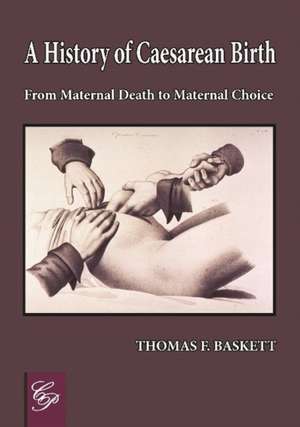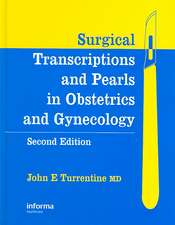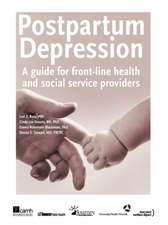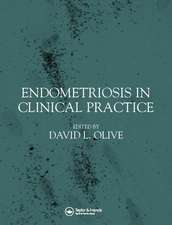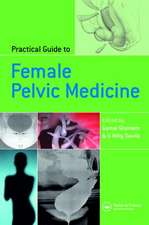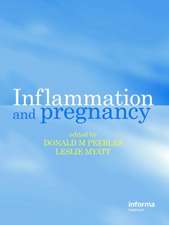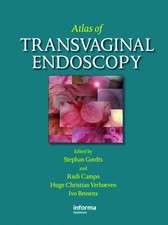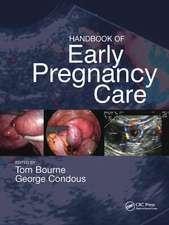History of Caesarean Birth: From Maternal Death to Maternal Choice
Autor Thomas F Basketten Limba Engleză Paperback – 21 mar 2017
Preț: 123.40 lei
Preț vechi: 139.32 lei
-11% Nou
Puncte Express: 185
Preț estimativ în valută:
23.61€ • 24.61$ • 19.55£
23.61€ • 24.61$ • 19.55£
Carte disponibilă
Livrare economică 13-27 martie
Preluare comenzi: 021 569.72.76
Specificații
ISBN-13: 9781854570659
ISBN-10: 185457065X
Pagini: 196
Dimensiuni: 175 x 249 x 19 mm
Greutate: 0.45 kg
Editura: Clinical Press
Colecția Clinical Press (UK)
ISBN-10: 185457065X
Pagini: 196
Dimensiuni: 175 x 249 x 19 mm
Greutate: 0.45 kg
Editura: Clinical Press
Colecția Clinical Press (UK)
Recenzii
"I would urge every obstetrician to read this book and digest the true history of the procedure and its evolution to current day practice." -- Sir Sabaratam Arulkumaran, Past President, British Medical Association BMA, Past President, Royal College of Obstetricians & Gynaecologists RCOG & Past President, International Federation of Gynaecology and Obstetrics FIGO
A History of Caesarean Birth is a must read for all people working in health care who are interested in the history of medicine... and that should mean all of them! -- Lois TuttonPresident of the Bristol Medico-Historical Society & Past President of the Bristol Medico Chirurigical Society
This book takes on a challenging task, giving a comprehensive treatise on the origins, history, and present state of Caesarean Section in the broad spectrum of delivery options for women. He subtitles it "From Maternal Death to Maternal Choice", a stark reminder of where we have come from and the present state of play. I enjoyed reading this book - it is very well referenced and researched, and while it only has just under 200 pages, it encompasses a wide range of the history of Caesarean section delivery - from earliest references, through to the naming of the procedure, to individuals in Shakespeare's works who might have been so born (Julius Caesar and Macduff if you are interested). I particularly enjoyed Chapter 4 on self performed Caesarean sections. These are documented meticulously yet in a fresh manner, and you wonder how these could even have happened. They were mostly in younger women in straightened circumstances, and these are not mythological or lost in mists of time. One case, reported in 2004 in the Int. J. Obstet Gynecol, related the tale of a woman in her 9th pregnancy who, with a sharp kitchen knife delivered herself of a baby boy, and all her intestines poured out. Her eldest child fetched a nurse who stitched the skin having replaced the intestines, and then arranged for a 12 hour truck ride to take her to hospital to have it repaired properly. The baby thrived, apparently. Anecdotes like these bring the book to life, and make it an enjoyable read. Tales of the first successful survival of the mother and baby following a section in 1889 from the Rotunda hospital (where my eldest child was born 100 years later) make the gap between some of the mythology of the first chapter and today's reality a very narrow one. - David Cahill, Consultant Gynaecologist, St Michael's Hospital, Bristol
What a great title for a book that looks historically, medically, economically and socially at the most common operation carried out on women in the world. Right at the start, I fully recommend this book to everyone, and not just Obstetricians. Birth fascinates, intrigues, and challenges us all. I have yet to attend a dinner party and meet a woman who had a fully normal delivery, at least of their first baby! What started as a cultural post mortem procedure and is now considered in many societies to be a matter of choice is expertly and uniquely described in this beautifully researched and written book by Tom Baskett. A world-famous Obstetrician who hales from these shores, and who in the latest of his prolific tomes has produced a book that is entirely readable, non-confrontational and leaves no questions unanswered in a rich series of chapters. If youve gone to the trouble of reading this review, please go the extra metre and buy it for yourself, your partner, or your children youre trying to encourage into medicine. If nothing else, youll be the star expert witness at the next dinner party! - Prof Jim Dornan, The Ulster Medical Journal
A History of Caesarean Birth is a must read for all people working in health care who are interested in the history of medicine... and that should mean all of them! -- Lois TuttonPresident of the Bristol Medico-Historical Society & Past President of the Bristol Medico Chirurigical Society
This book takes on a challenging task, giving a comprehensive treatise on the origins, history, and present state of Caesarean Section in the broad spectrum of delivery options for women. He subtitles it "From Maternal Death to Maternal Choice", a stark reminder of where we have come from and the present state of play. I enjoyed reading this book - it is very well referenced and researched, and while it only has just under 200 pages, it encompasses a wide range of the history of Caesarean section delivery - from earliest references, through to the naming of the procedure, to individuals in Shakespeare's works who might have been so born (Julius Caesar and Macduff if you are interested). I particularly enjoyed Chapter 4 on self performed Caesarean sections. These are documented meticulously yet in a fresh manner, and you wonder how these could even have happened. They were mostly in younger women in straightened circumstances, and these are not mythological or lost in mists of time. One case, reported in 2004 in the Int. J. Obstet Gynecol, related the tale of a woman in her 9th pregnancy who, with a sharp kitchen knife delivered herself of a baby boy, and all her intestines poured out. Her eldest child fetched a nurse who stitched the skin having replaced the intestines, and then arranged for a 12 hour truck ride to take her to hospital to have it repaired properly. The baby thrived, apparently. Anecdotes like these bring the book to life, and make it an enjoyable read. Tales of the first successful survival of the mother and baby following a section in 1889 from the Rotunda hospital (where my eldest child was born 100 years later) make the gap between some of the mythology of the first chapter and today's reality a very narrow one. - David Cahill, Consultant Gynaecologist, St Michael's Hospital, Bristol
What a great title for a book that looks historically, medically, economically and socially at the most common operation carried out on women in the world. Right at the start, I fully recommend this book to everyone, and not just Obstetricians. Birth fascinates, intrigues, and challenges us all. I have yet to attend a dinner party and meet a woman who had a fully normal delivery, at least of their first baby! What started as a cultural post mortem procedure and is now considered in many societies to be a matter of choice is expertly and uniquely described in this beautifully researched and written book by Tom Baskett. A world-famous Obstetrician who hales from these shores, and who in the latest of his prolific tomes has produced a book that is entirely readable, non-confrontational and leaves no questions unanswered in a rich series of chapters. If youve gone to the trouble of reading this review, please go the extra metre and buy it for yourself, your partner, or your children youre trying to encourage into medicine. If nothing else, youll be the star expert witness at the next dinner party! - Prof Jim Dornan, The Ulster Medical Journal
